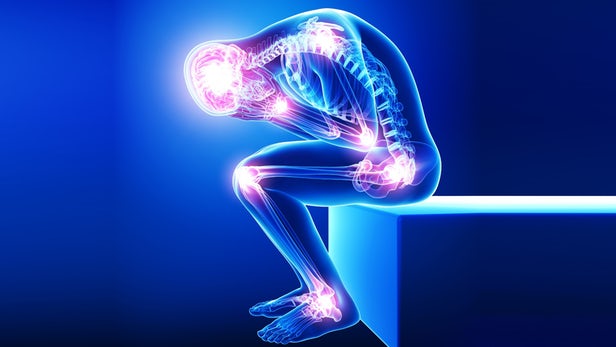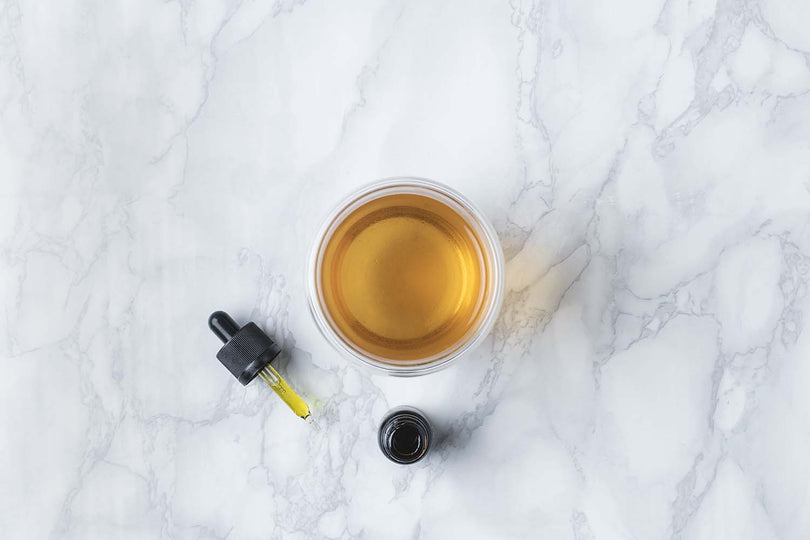Blog
Methol and Camphor: What Sets Canodyne Apart from other CBD Products
At Canodyne, we’re in the business of providing safe, effective relief to patients experiencing pain. We introduced our CBD gel in the wake of a national opioid overdosing epidemic that has taken the lives of more than 130 people a day in the United States. About one in five adults have chronic pain, according to the U.S. Centers for Disease Control. Chronic pain is pervasive, but relief doesn’t need to come in the form of lethal and highly addictive prescription opioids; it can come in the form of CBD. A 2018 review by researchers at the University of Belgrade concluded that CBD was effective in managing various types of pain, including chronic pain.
After being given bad information by pharmaceutical companies that opioids weren’t addictive back in the 1990’s, doctors today are rightfully very careful about what they will recommend to patients for pain relief. We created Canodyne to offer health care providers a trusted solution and are proud to work with doctors from the American College of Foot and Ankle Surgeons and the American Orthopaedic Foot and Ankle Society.
CBD has exploded in popularity as a pain relief alternative, but unfortunately its growth has also drawn several impostors to the market looking to capitalize on the trend. A 2017 University of Pennsylvania study found that only 30 percent of CBD products purchased contained an actual CBD content that was within 10% of the amount listed on the product label.
It’s important that patients make sure their CBD vendors use third-party testing facilities to ensure quality. Certificates of Analysis should not be conducted internally. At Canodyne, each batch of our product is third-party lab tested and guaranteed to be free of contaminants like heavy metals, bacteria, microbial life, mycotoxins and pesticides.
One of our major differentiators is we use FDA monographed active ingredients that are FDA-registered over-the-counter topical medications. Our gel is produced in a CGMP FDA-registered facility to ensure the highest quality standards.
One ingredient we use is menthol, which is used to treat minor aches and pains, including arthritis and sprains. Menthol works by causing a cooling and heating sensation on skin, which counteracts deep pains in muscles, joints, and tendons. Other than skin irritation for certain patients with sensitive skin, menthol’s side effects are minimal.
The other FDA-approved ingredient we use is camphor, which also helps relieve pain and inflammation when applied to the skin. A 2015 study found that when sprays containing natural ingredients including camphor and menthol were applied to joints, shoulders, and lower back areas for a period of 14 days, they were effective in relieving moderate pain.
Camphor products have shown to be effective in relieving pain, inflammation, and swelling due to arthritis. Similar to menthol, the heating and cooling sensations it creates when applied to the skin counteracts joint and muscle pain.
Though CBD itself, like all dietary supplements, is not currently regulated by the FDA, Canodyne patients can rest assured they are using a product with FDA-monographed active ingredients.
As always, check with your doctor to see if topical CBD is the right pain relief option for your condition.

CBD
To Keep It Safe, Stick with Topical CBD
Vaping, once considered a safe alternative to smoking, is under attack.
Health officials are trying to determine if any vaping products are safe to use in the face of a national epidemic of respiratory illnesses that have been linked to nicotine and marijuana vapes.
The Center for Disease Control has identified about 450 possible cases in 33 states, including six deaths. Officials still haven’t pinpointed the exact cause, but exposure to chemicals in vaping liquid is suspected.
The Food and Drug Administration is trying to determine if vitamin E acetate, a thickening agent, may have played a role in the respiratory cases.
"Because consumers cannot be sure whether any THC vaping products may contain vitamin E acetate, consumers are urged to avoid buying vaping products on the street," the agency said in a statement last week.
Some scientists are concerned that vaporizing can lead to complications when the vapor builds up in a user’s lungs and causes irritation. Another concern is the unknown risks associated with vaping equipment itself. Last year, a Johns Hopkins University study discovered that traces of the metal heating coils in vaping utensils can be found in the vapor users inhale.
But perhaps biggest concern is consumers aren’t always entirely sure what’s in the products they are using. Mislabeling is happening in the CBD vape market as well.
A 2017 University of Pennsylvania study found that nearly 70 Percent of CBD oils sold online are mislabeled. Only 30 percent of CBD products purchased contained an actual CBD content that was within 10% of the amount listed on the product label, according to the study. The lead researcher, Professor Marcel Bonn-Miller, also found that a number of products contained a significant amount of THC—the chemical compound in cannabis that makes a person feel “high.” Health officials say the potential for unknown additives is the greatest risk with vaping CBD as opposed to consuming it in any other form.
They recommend consumers read product labels and consult their doctors about dosing and possible drug interactions. The best way to verify a product is to ask for its COA, or certificate of analysis.
At Canodyne, each batch of our CBD is third-party lab tested in an FDA-approved facility and guaranteed to be free of contaminants like heavy metals, bacteria, microbial life, mycotoxins and pesticides. Also, you’ll never have to worry about getting “high” from our gel. We use isolate that is 0% THC, guaranteed.
Based on all the unknown risks associated with the vaping industry, we’d encourage users to consider topicals as a delivery system, especially for treating pain. We already know from a 2016 animal study in the European Journal of Pain that rats who received high doses of topical CBD showed significantly lower levels of inflammation and lower pain behavior scores compared to those given a placebo.
CBD salves like Canodyne are continuing to increase in popularity and allow the drug to be delivered directly to where pain is occurring. There are very few side effects beyond redness and skin irritation for patients with sensitive skin.
For right now, it’s the safest option.

What Medical Research Says About Using CBD to Treat Pain
Consumers today use CBD to treat multiple medical conditions including anxiety, depression, and sleep disorders. However, it is most commonly used to manage chronic pain, arthritis and joint point.
How it works is humans have a vast network of receptors located in our brains and throughout our central and peripheral nervous systems known as the Endocannabinoid System. These receptors react to cannabinoids, including CBD, to regulate many physiological processes, including pain relief. When the receptors interact with a cannabinoid, they trigger changes in cells and create anti-inflammatory and pain-relieving effects that help with pain management. This is why CBD has become so popular as a pain reliever.
Though there aren’t any FDA-approved, nonprescription CBD products on the market presently, there are several studies that point to CBD’s healing properties.
(Note: Canodyne is one of the few CBD topicals on the market made with FDA monographed active ingredients: menthol + camphor.)
When the National Academies of Sciences, Medicine, and Engineering looked at cannabis and cannabinoids, they found that adults who treated chronic pain with cannabis or cannabinoids were more likely to experience a significant reduction in pain symptoms. The 2017 study recommended that the federal government fund additional research on the beneficial effects of cannabis and cannabinoids.
Another 2018 review by researchers at the University of Belgrade concluded that CBD was effective in managing various types of pain, including chronic pain. The review assessed studies conducted between 1975 and March 2018 examining the therapeutic value of cannabis and cannabinoids.
Much more research is underway about the analgesic properties of CBD, but the results so far are promising.
Equally promising are the animal studies looking at CBD as a pain-reliever. A 2017 study published in Pain showed that rats who received CBD showed less inflammation in their joints areas and fewer pain-related symptoms.
For topical CBD in particular, a 2016 study in the European Journal of Pain using rats to study arthritis found that the rats who received high doses of topical CBD showed significantly lower levels of inflammation and lower pain behavior scores compared to those given a placebo.
The research continues to point to CBD as an effective form of pain relief, and we’re hopeful to see more investment into research and clinical trials now that hemp has been legalized at the federal level.
Talk to your doctor to see if topical CBD is the right pain relief option for your condition.
Canodyne
What is CBD?
Now that it’s available in grocery stores, CBD is officially on the verge of mainstream acceptance. But despite its growing popularity – 1 in 7 Americans use CBD for pain relief and therapeutic purposes, according to a recent Gallup survey – there’s a decent chance that although you’ve heard of CBD, you might not know what it is or how it works.
Let us help clear things up.
What is CBD?
CBD, which stands for cannabidiol, is one of more than 120 organic chemical compounds found in hemp, a member of the Cannabis Sativa family. Unlike it’s cannabinoid cousin, THC Delta 9, CBD delivers therapeutic benefits without the undesirable side effects. CBD is non-toxic and non-habit forming. It doesn’t have psychoactive effects and won’t get you “high.”
Is CBD legal?
Yes! Finally! Hemp had been illegal for decades under the 1970 Controlled Substances Act because federal law lumped it together with all other cannabis plants. However, that all changed last year when President Trump signed the Agriculture Improvement Act of 2018 (more commonly known as the 2018 Farm Bill) into law. Among the 2018 Farm Bill’s broad-ranging provisions was the legalization of the sale and cultivation of hemp at the federal level. The new law went into effect Jan. 1, 2019.
What do people use CBD for?
One of the most common uses, and what we specialize in, is treating different types of chronic pain. An animal study from the European Journal of Pain showed that topical application of CBD helps lower pain and inflammation due to arthritis. Other studies have shown CBD’s potential for treating inflammatory and neuropathic pain. CBD is also used for addressing insomnia and anxiety.
How do you take CBD?
CBD consumption comes in a variety of forms, including edibles, vapors, tinctures and topical solutions. Canodyne is a topical menthol gel that is formulated to combine organic healing compounds with clinically proven pharmaceutical pain relievers. We’ll discuss more about our gel and why it’s our preferred form in a later post.
How does CBD work?
In humans, there is a vast network of receptors located in the brain and throughout the central and peripheral nervous systems known as the Endocannabinoid System. These receptors react to cannabinoids, including CBD, to regulate many physiological processes such as pain relief. How it works is when those receptors in our bodies interact with a cannabinoid, they trigger changes in cells that produce healing benefits for the body and mind. Cannabinoids can come from our bodies or from a plant, such as cannabis. Plant-based cannabinoids are called phytocannabinoids.
How do you extract CBD?
There are different methods. We use ethanol/alcohol to extract our hemp, the most commonly used method for cannabis/hemp extracts. It is a clean and cold extraction method that allows for optimal retention of terpenes and other sensitive compounds. We also employ low-temperature and relatively low-pressure CO2 extractions for some of our products.
Hopefully our brief Q&A gives you a better sense of what CBD is and how it works. We don’t expect you to have an intricate understanding of the Endocannabinoid System, but at least now you know enough to be conversational next time someone talks about CBD at a party. We are firm believers in the power of CBD to relieve pain and look forward to seeing more and more scientific studies confirming its healing properties.
Stay tuned for more information about Canodyne in our next post.

